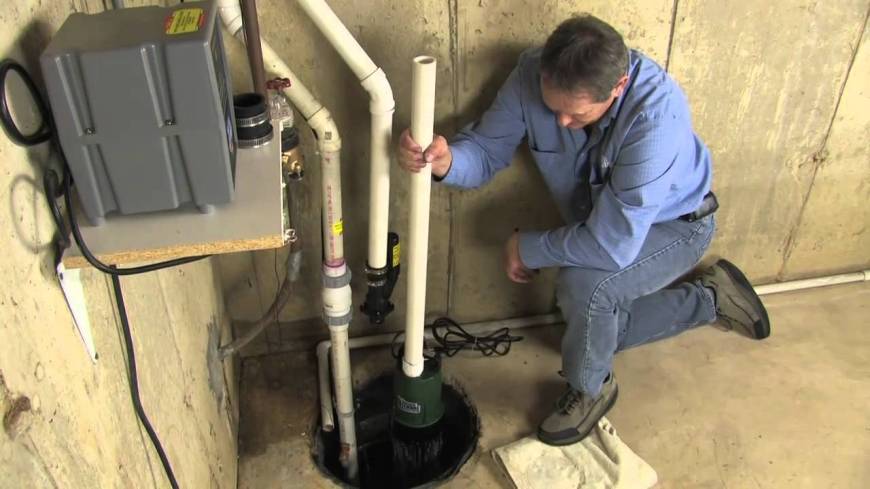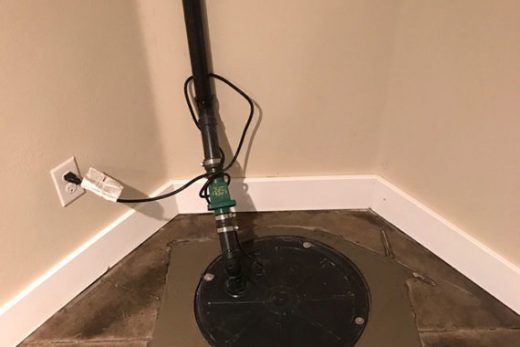The article author is making a few great points on Cleaning & Maintenance Tips for Your Home's Sump Pump as a whole in this post beneath.

Sump pumps are vital elements in several homes, especially in locations vulnerable to flooding or extreme wetness. They aid protect against water damage by successfully getting rid of excess water from basements or crawl spaces. Nonetheless, like any other appliance, sump pumps need routine upkeep to ensure they work properly when needed one of the most. Cleaning your sump pump is a vital part of its upkeep, and comprehending how to do it properly can conserve you from expensive repairs and potential calamities.
Introduction
Maintaining a clean sump pump is important for its appropriate performance and durability. Neglecting this crucial task can bring about clogs, malfunctions, and inevitably, water damage to your residential or commercial property. Consequently, discovering how to cleanse a sump pump is vital for home owners that rely on these gadgets to maintain their cellars completely dry and protected.
Comprehending the Sump Pump
Before diving right into the cleaning process, it's vital to have a basic understanding of just how a sump pump works. Generally set up in a pit or basin below the cellar floor, a sump pump includes numerous crucial components, consisting of a pump, a float button, and a discharge pipe. When water gathers in the pit, the float switch turns on the pump, which after that pumps the water out via the discharge pipe, far from the building's structure.
Indications of a Dirty Sump Pump
Knowing when your sump pump requires cleansing is important for avoiding possible breakdowns. Some usual indications that suggest a dirty sump pump include odd sounds during operation, decreased water flow, and noticeable particles in the pit. If you discover any of these symptoms, it's vital to cleanse your sump pump quickly to avoid any kind of additional concerns.
Getting ready for Cleaning
Prior to you start cleaning your sump pump, it's important to take some security preventative measures. Begin by shutting off the power to the pump to prevent any kind of electric mishaps. In addition, use appropriate protective equipment, such as gloves and safety glasses, to secure yourself from dirt, particles, and potential microorganisms.
Detailed Guide to Cleaning Up a Sump Pump
Turning off the Power
Begin by separating the power supply to the sump pump to prevent any type of crashes while cleaning.
Eliminating Particles and Dust
Make use of a bucket or a scoop to eliminate any kind of noticeable debris, dirt, or sediment from the sump pit. Dispose of the particles correctly to avoid it from obstructing the pump or the discharge pipeline.
Cleaning the Pump and Float Change
When the pit is free from particles, meticulously remove the pump from the pit. Examine the pump and the float button for any type of indications of damage or wear. Use a soft brush or cloth to cleanse the surface areas and get rid of any kind of built up gunk.
Flushing the System
After cleaning up the pump and float switch, flush the sump pit with tidy water to eliminate any staying dust or sediment. This will help make certain that the pump operates smoothly and successfully.
Looking For Appropriate Functioning
Prior to reinstalling the pump, perform a quick examination to make certain that the float button triggers the pump correctly. Pour some water into the sump pit and observe the pump's procedure. If every little thing is working appropriately, you can reassemble the pump and reconnect the power supply.
Maintenance Tips to Maintain Your Sump Pump Clean
Along with routine cleaning, there are several upkeep pointers you can comply with to keep your sump pump in optimal condition:
- Normal Inspection: Examine your sump pump regularly for any kind of indicators of wear, damages, or blockages.
- Keeping the Surrounding Location Clean: Guarantee that the area around the sump pit is devoid of particles, dirt, and obstructions.
- Testing the Pump Occasionally: Test your sump pump periodically by pouring water into the pit and observing its operation. This will assist you determine any kind of prospective issues before they escalate.
Verdict
Cleansing your sump pump is an essential facet of its upkeep and makes sure that it runs properly when you require it one of the most. By following the actions outlined in this overview and including normal maintenance into your regimen, you can prolong the life-span of your sump pump and secure your home from water damages.
6 STEPS ON HOW TO CLEAN A SUMP PUMP PROPERLY
UNDERSTANDING SUMP PUMPS
Your sump pump plays a crucial role in protecting your home by managing and removing excess water. It primarily functions as a “shield”, guarding your basement against the damaging effects of water accumulation. The pump is housed in a sump pit in the lowest part of your basement, and its job is to pump out any water that collects there.
During heavy rainfalls or when snow melts rapidly, water can infiltrate your basement, posing potential risks like flooding, structural damage, and harmful mold growth. Here, the sump pump springs into action, pumping out the intruding water and directing it away from your home.
SAFETY FIRST
Before cleaning, remember to prioritize safety. Disconnect the sump pump from the power source to prevent any accidental electric shocks. Also, wear sturdy gloves to protect your hands from any sharp or dirty components within the pump.
REMOVE THE SUMP PUMP
After ensuring your safety, the next step is to remove the sump pump from its pit. Doing this might require careful maneuvering as you don’t want to damage any pump components. Once removed, clean the sump pit to remove any accumulated debris or sludge.
INSPECT THE PUMP
Inspect the pump for any visible signs of wear or damage. Check the power cord, float switch, and impeller housing. If any components look worn out or damaged, consider replacing them to ensure optimal performance.
CLEAN THE PUMP
Thoroughly clean the pump with warm, soapy water. Make sure to rid it of any dirt, gravel, or other debris that might impede its performance. You can use a toothbrush to clean the small, hard-to-reach parts of the pump.
REINSTALL THE SUMP PUMP
- Reinstall the pump into the sump pit
- Make sure it’s positioned correctly to remove the water effectively
- Once it’s back in place, reconnect it to the power source
TEST THE PUMP
Finally, pour some water into the pit to ensure the pump works correctly. It should start automatically and begin pumping out the water; if it doesn’t, check the power source and the positioning of the pump.
Remember, while cleaning your sump pump is an essential part of home maintenance, hiring a professional plumber for a thorough inspection and cleaning at least once a year is also important. This will ensure that your pump is in optimal condition, ready to protect your home from potential water damage.
BEST PRACTICES FOR CLEANING SUMP PUMP DISCHARGE PIPES
- Regular Inspection: Regularly inspect your discharge pipes, especially during heavy rainfall or snowmelt periods. Look for any signs of blockage or damage. Early detection of problems can prevent serious issues down the line.
- Periodic Cleaning: Over time, sediment and debris can accumulate in the discharge pipes, impeding the flow of water. Regular cleaning helps keep the pipes clear and functioning efficiently. You can use a high-pressure water jet to effectively clean the pipes.
- Insulation During Winter: In colder climates, discharge pipes can freeze, blocking the outflow of water. Protect your discharge pipes from freezing temperatures by insulating them with foam pipe insulation. This will ensure the sump pump can continue to discharge water even in freezing conditions.
- Proper Positioning: The discharge pipe should be positioned to direct water away from your home’s foundation. Improper positioning can lead to water seeping back into the basement. Ensure the pipe is long enough and angled correctly.
- Installation of a Check Valve: A check valve prevents water from flowing back into your sump pit after the pump has pushed it out. Installing a check valve helps maintain the efficiency of your sump pump and reduces the risk of flooding.
- Minimize Pipe Turns: Every curve or turn in the discharge pipe can decrease the efficiency of water flow. By minimizing turns and bends in your discharge pipe, you can increase the efficiency of your sump pump.
https://www.fullspeedplumbing.com/how-to-clean-a-sump-pump-properly9999/

Do you enjoy reading up on Steps to Cleaning Your Sump Pump Properly? Leave a remark below. We'd be delighted to find out your thinking about this entry. In hopes that you visit us again in the near future. Sharing is caring. You never know, you might be doing someone a favor. Thanks a lot for your time invested reading it.
Rates
Comments on “Fast Steps to Taking Care of Your Sump Pump”